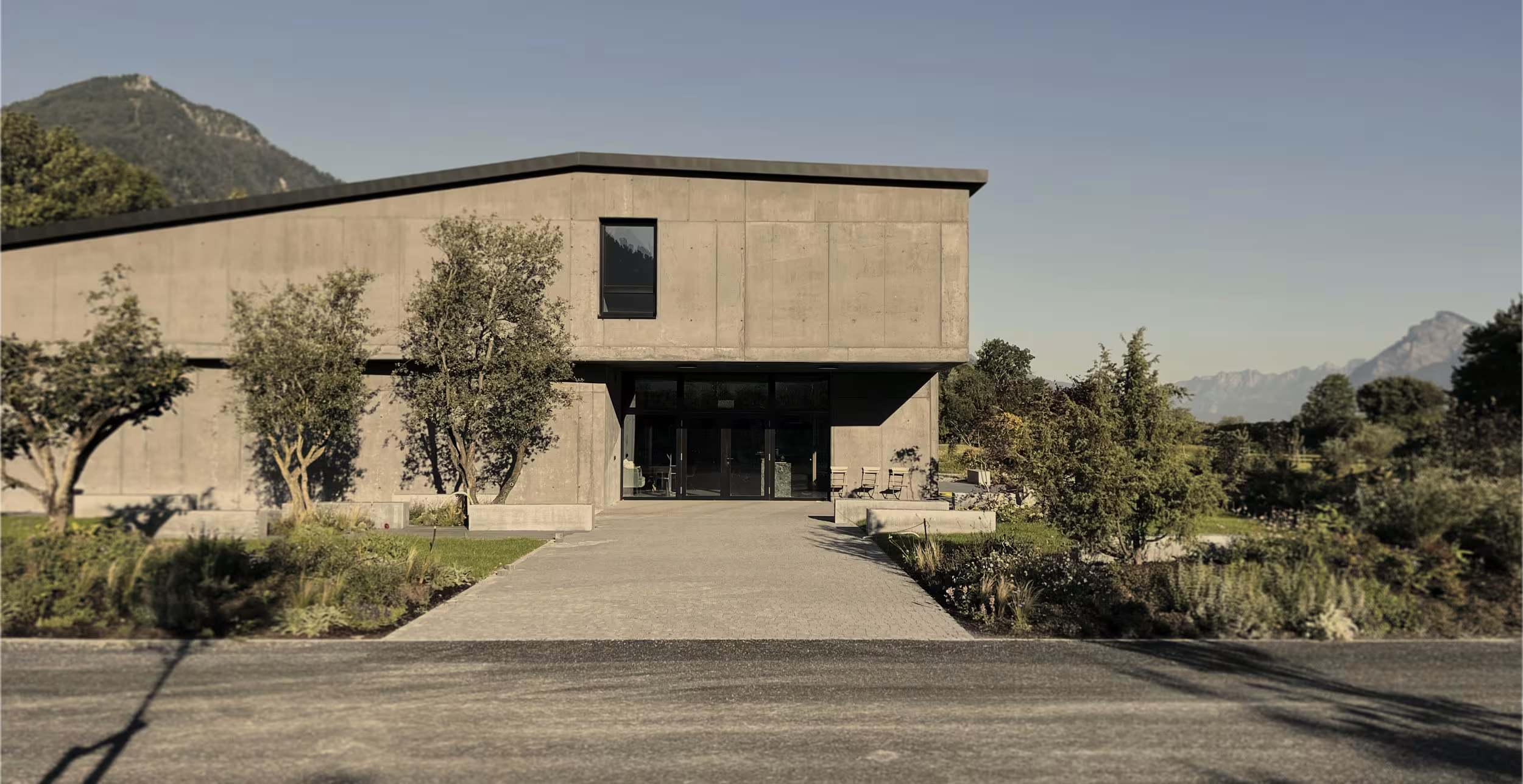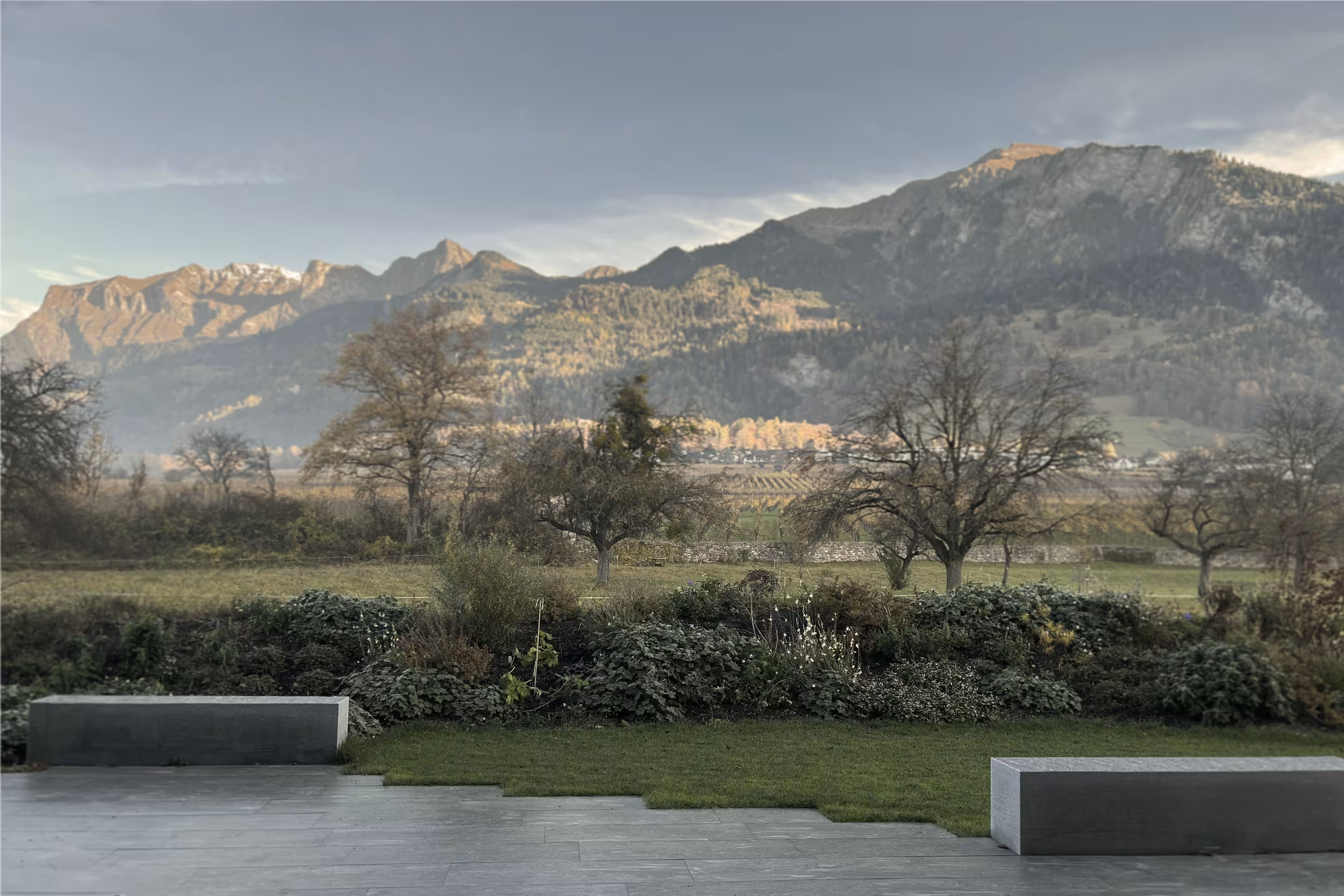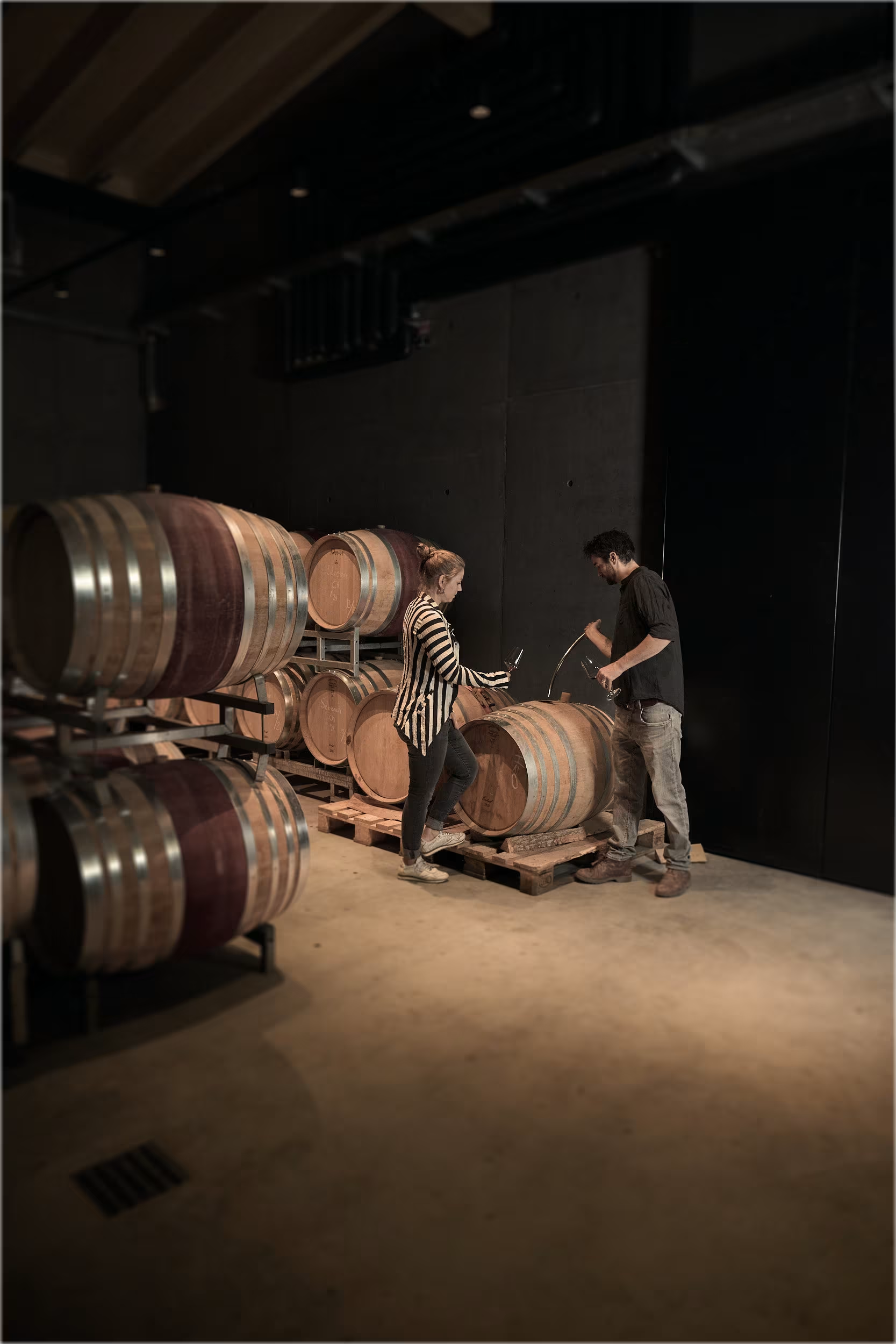Winery
The Fromm Family
After 159 vintages in the village centre, the new building on Baguggiweg was inaugurated in 2025, marking the official handover of the business from Georg to Marco. Marco now runs the family winery with uncompromising dedication, alongside his wife Jasmin and a small, select team.
Georg continues to lend his energetic support, sharing his boundless experience and spending time with his grandchildren, Neo Gaetano and Soraya, on his Neni Day.
The Vineyards
The term 'terroir' is to be understood here in its fullest sense. This encompasses everything from the composition of the soil and the vineyard's altitude and exposure to our philosophy, signature style and spirit. Our single-vineyard wines also reflect the different grape clones and ages found in each vineyard. SELVENEN and KÜNG are each half old Swiss clones and half Burgundy clones, while MICHEL and FIDLER are purely Swiss and SPIELMANN and SCHÖPFI are purely Burgundy. An enormously exciting sextet.

Selvenen

This large vineyard in Malans is named after the Romansh word for forest, 'Selva'. We planted 1.7 hectares of Pinot Noir and 30 acres of Chardonnay in our 'forest plot', and these vines are now the oldest we have.
Georg planted the first Pinot Noir vines in our Selvenen vineyard in 1969. A 245 Swiss clone. More than twenty-five years later, we were among the first wineries in the region to plant Burgundy clones 115 and 777 in the stony, limestone- and humus-rich soil of the Selvenen vineyard. Today, these are the oldest Swiss and Burgundy vines we have. Since 2011, we have been producing our Pinot Noir Selvenen from these vines as a single-vineyard wine. Our single-vineyard Chardonnay from Selvenen is an absolute rarity, with just four barriques produced annually from 30 acres of Chardonnay vines.


Selvenen
This large vineyard in Malans is named after the Romansh word for forest, 'Selva'. We planted 1.7 hectares of Pinot Noir and 30 acres of Chardonnay in our 'forest plot', and these vines are now the oldest we have.
Georg planted the first Pinot Noir vines in our Selvenen vineyard in 1969. A 245 Swiss clone. More than twenty-five years later, we were among the first wineries in the region to plant Burgundy clones 115 and 777 in the stony, limestone- and humus-rich soil of the Selvenen vineyard. Today, these are the oldest Swiss and Burgundy vines we have. Since 2011, we have been producing our Pinot Noir Selvenen from these vines as a single-vineyard wine. Our single-vineyard Chardonnay from Selvenen is an absolute rarity, with just four barriques produced annually from 30 acres of Chardonnay vines.
Michel

Michel is a hidden gem of a vineyard. Nestled within ancient walls, it is located on the western edge of the village, on a street bearing its name. We lease forty acres of Swiss Pinot Noir clones from Heidi Fromm on the Michel plot.
The Michel vineyard is one of the oldest in Malans, and the historic Michel patrician house is one of the most beautiful in the village. Located at an altitude of 546 metres on the western edge of the village, the Michel vineyard sits on the border between the residential and vineyard areas. The soil is characterised by the Malans Rüfen, which is rich in clay, slate and limestone. In 1999, Heidi Fromm planted 10–55 Swiss Pinot Noir vines on the 40-acre site. Since 2018, we have been producing a single-vineyard Pinot Noir made from a pure Swiss clone, sourced from the idyllic Michel vineyard.
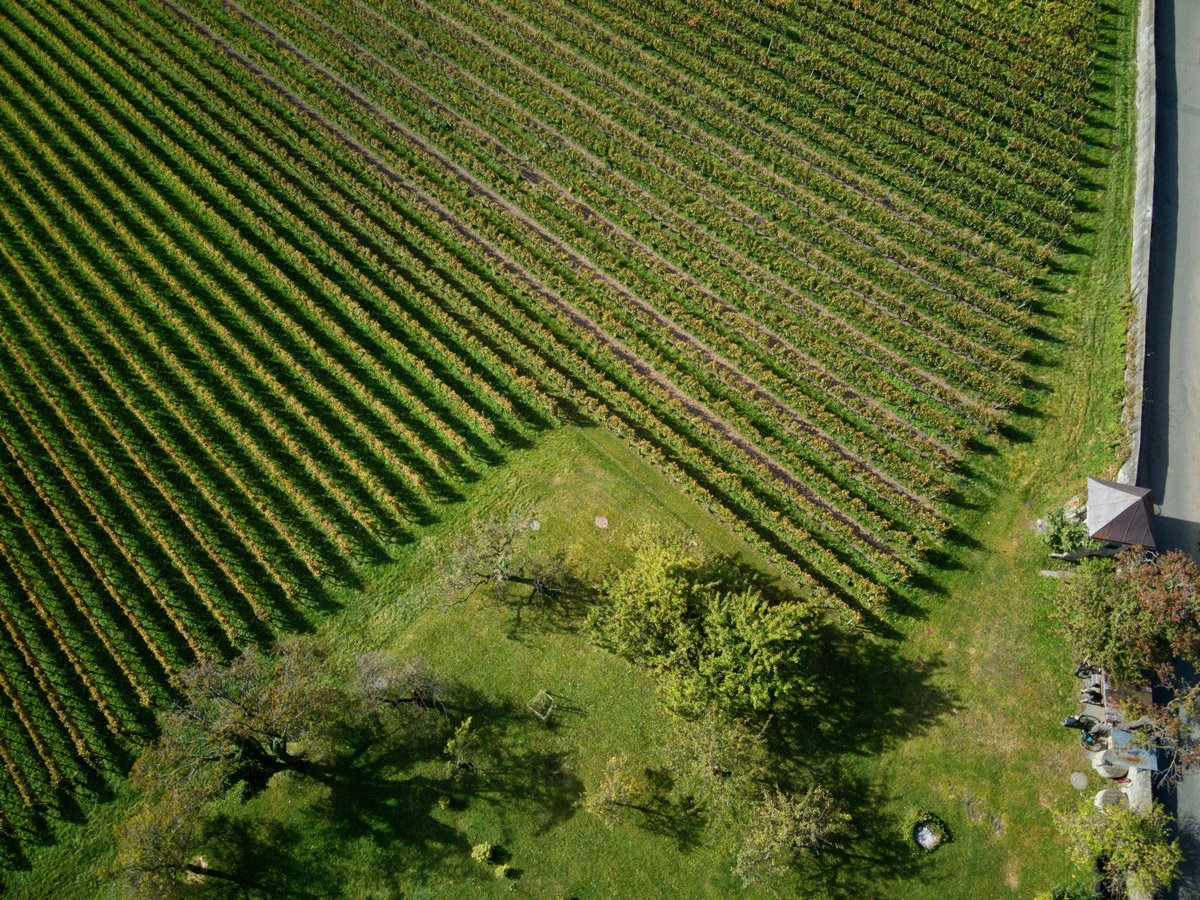
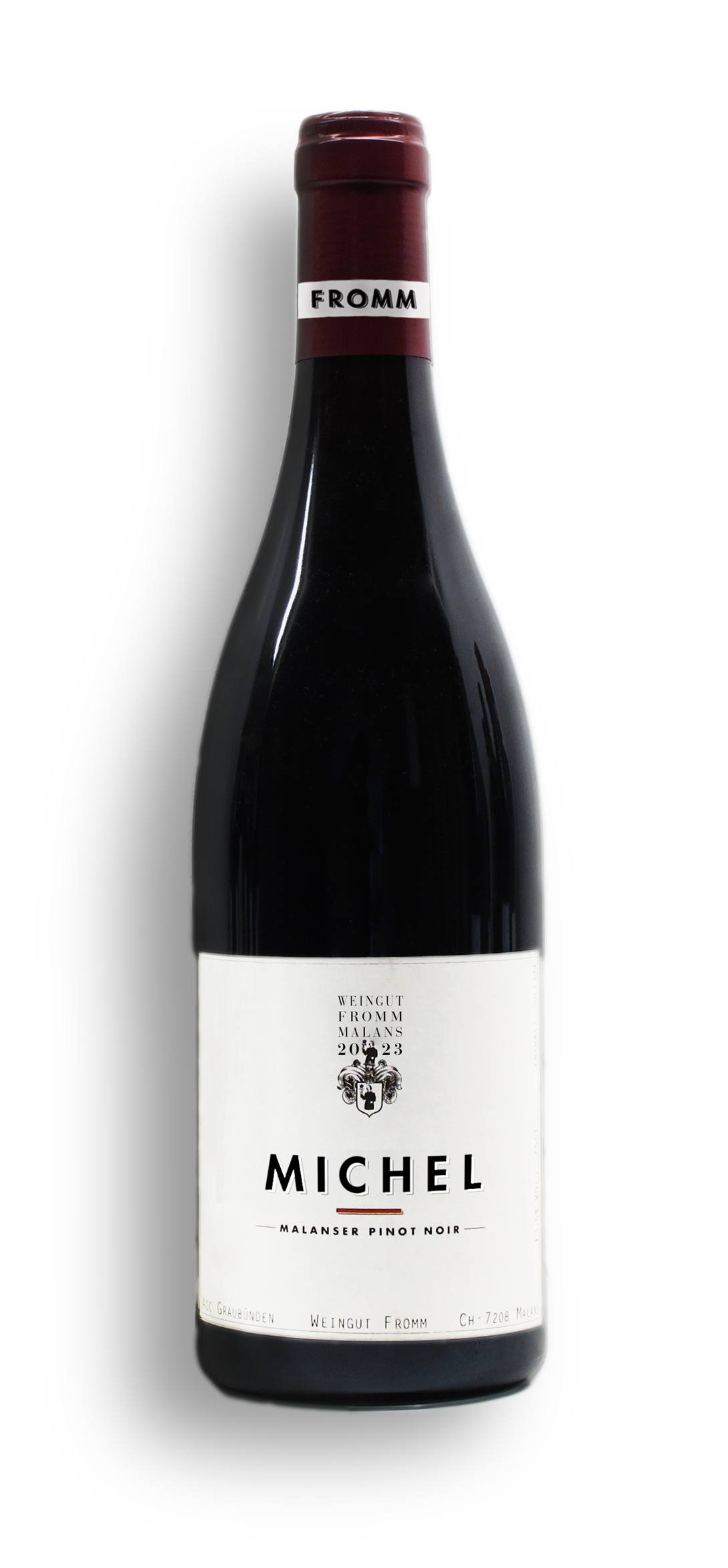
Michel
Michel is a hidden gem of a vineyard. Nestled within ancient walls, it is located on the western edge of the village, on a street bearing its name. We lease forty acres of Swiss Pinot Noir clones from Heidi Fromm on the Michel plot.
The Michel vineyard is one of the oldest in Malans, and the historic Michel patrician house is one of the most beautiful in the village. Located at an altitude of 546 metres on the western edge of the village, the Michel vineyard sits on the border between the residential and vineyard areas. The soil is characterised by the Malans Rüfen, which is rich in clay, slate and limestone. In 1999, Heidi Fromm planted 10–55 Swiss Pinot Noir vines on the 40-acre site. Since 2018, we have been producing a single-vineyard Pinot Noir made from a pure Swiss clone, sourced from the idyllic Michel vineyard.
Küng

The historic Küng vineyard is located in the heart of the village and is surrounded by stone walls. Its name dates back to the 14th century: 'Küng, descended from royal blood'. Only 40 ares of Pinot Noir from the 2.4-hectare vineyard make it into our single vineyard wine.
The von Salis family has owned the medieval Bothmar Castle and the Küng vineyard for centuries. We are honoured to have been able to produce a unique single-vineyard Pinot Noir from the eastern 40 acres of this historic vineyard since 2023. The Swiss vines were planted in 1980, and the additional 20 acres of 115 Burgundy vines were planted in 2007. The Küng soil is rich in slate, limestone and humus, characterised by glacial deposits and sediments from the Rüfen. It is a single-vineyard with a great history.


Küng
The historic Küng vineyard is located in the heart of the village and is surrounded by stone walls. Its name dates back to the 14th century: 'Küng, descended from royal blood'. Only 40 ares of Pinot Noir from the 2.4-hectare vineyard make it into our single vineyard wine.
The von Salis family has owned the medieval Bothmar Castle and the Küng vineyard for centuries. We are honoured to have been able to produce a unique single-vineyard Pinot Noir from the eastern 40 acres of this historic vineyard since 2023. The Swiss vines were planted in 1980, and the additional 20 acres of 115 Burgundy vines were planted in 2007. The Küng soil is rich in slate, limestone and humus, characterised by glacial deposits and sediments from the Rüfen. It is a single-vineyard with a great history.
Fidler

The Fidler vineyard is located on the south-western edge of the village, directly opposite our winery and between Spielmann and Schöpfi. In 1979, Georg planted the 27-acre vineyard with an ingenious Swiss Pinot Noir clone. Which clone exactly? Only the vine gods know that now.
We find it delightful and mysterious that the Pinots from this old vineyard always have a dense yet silky-fine, typically Fidler-esque tannin profile. Is it the soil, which has a high proportion of limestone, slate and loam? Or is it the Swiss Pinot Noir vines that Georg planted in 1979, the clones of which he no longer remembers? What is clear is that the Fidler vineyard, at 535 metres above sea level, is one of our three lowest sites and is therefore strongly influenced by Rhine sediments. Since 2012, we have vinified the grapes from Fidler as a single-vineyard Pinot Noir.
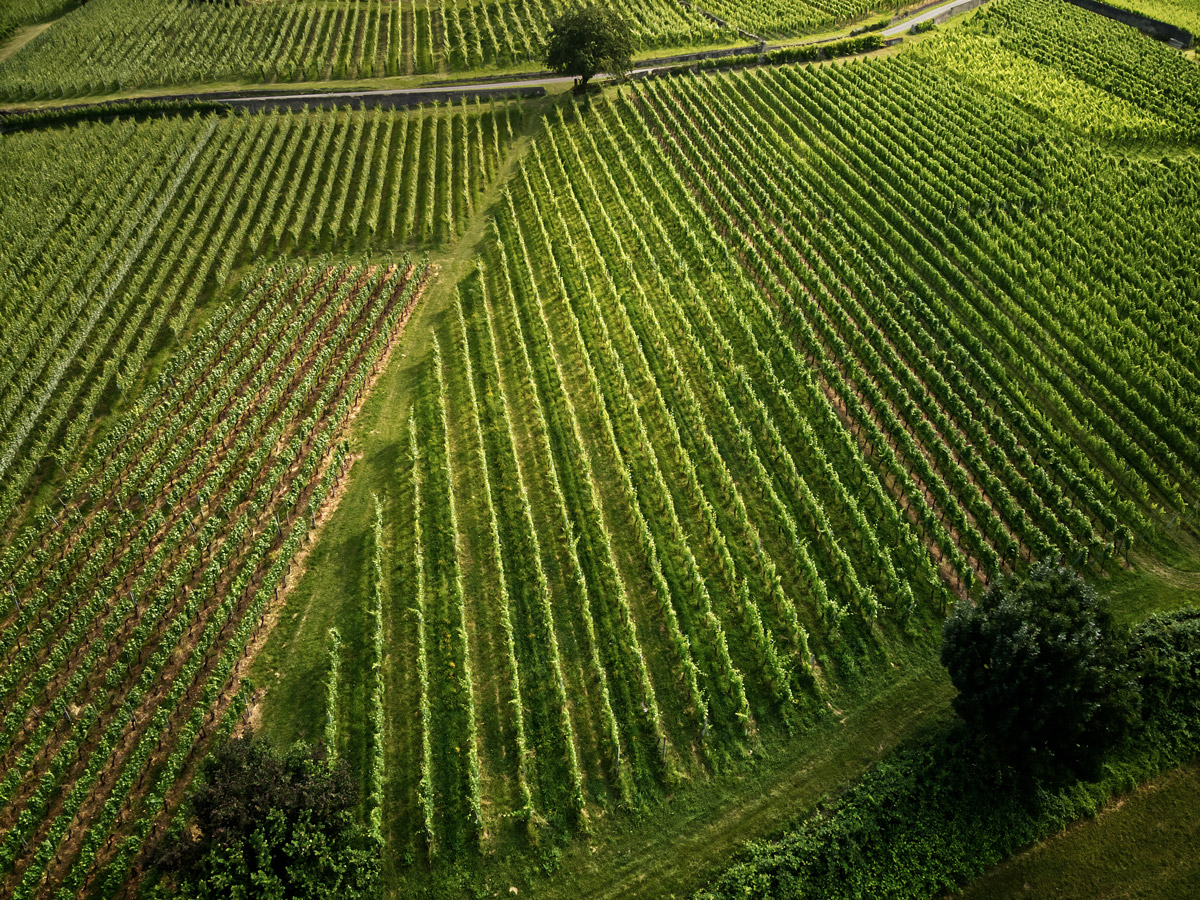

Fidler
The Fidler vineyard is located on the south-western edge of the village, directly opposite our winery and between Spielmann and Schöpfi. In 1979, Georg planted the 27-acre vineyard with an ingenious Swiss Pinot Noir clone. Which clone exactly? Only the vine gods know that now.
We find it delightful and mysterious that the Pinots from this old vineyard always have a dense yet silky-fine, typically Fidler-esque tannin profile. Is it the soil, which has a high proportion of limestone, slate and loam? Or is it the Swiss Pinot Noir vines that Georg planted in 1979, the clones of which he no longer remembers? What is clear is that the Fidler vineyard, at 535 metres above sea level, is one of our three lowest sites and is therefore strongly influenced by Rhine sediments. Since 2012, we have vinified the grapes from Fidler as a single-vineyard Pinot Noir.
Spielmann

Spielmann is the easternmost of our three low-lying vineyards and can be seen directly from our winery. Georg planted the 26-acre vineyard with two different clones of Pinot Noir from Burgundy, which produce superb grapes for a legendary wine.
This is a vineyard of great elegance and feminine energy. It has always been passed down the maternal line, most recently from Annetta Thöny to her four granddaughters: Salome, Mirjam, Bettina and Nadja. Located at an altitude of 529 metres, the Spielmann vineyard has a high proportion of clay, slate and loam, and is the epitome of small-scale Pinot Noir production. In 2005, we planted the 26-acre vineyard with low-yield, high-quality Burgundy Pinot Noir clones 777 and 943. Since 2013, we have produced an average of just two barriques, or 600 bottles, of this unique Spielmann Pinot Noir from these vines.
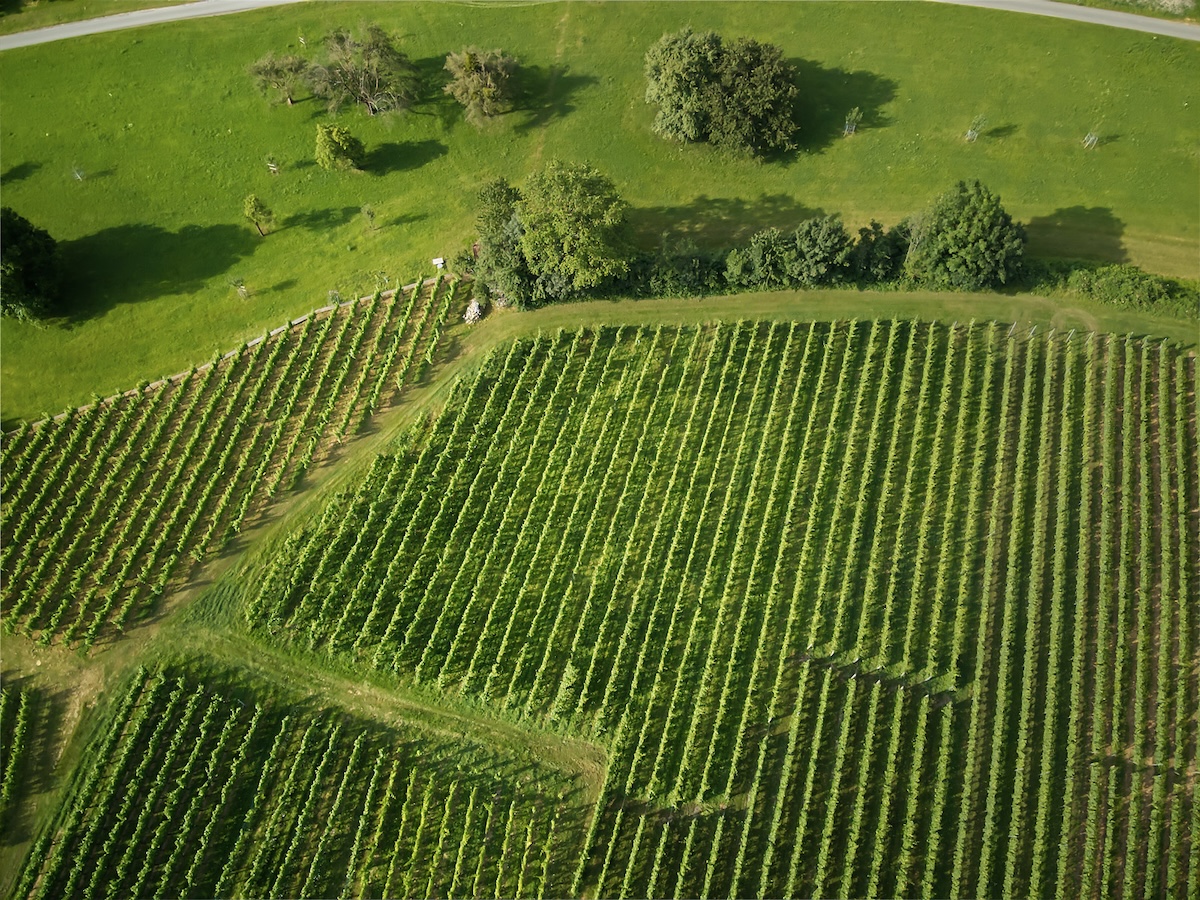

Spielmann
Spielmann is the easternmost of our three low-lying vineyards and can be seen directly from our winery. Georg planted the 26-acre vineyard with two different clones of Pinot Noir from Burgundy, which produce superb grapes for a legendary wine.
This is a vineyard of great elegance and feminine energy. It has always been passed down the maternal line, most recently from Annetta Thöny to her four granddaughters: Salome, Mirjam, Bettina and Nadja. Located at an altitude of 529 metres, the Spielmann vineyard has a high proportion of clay, slate and loam, and is the epitome of small-scale Pinot Noir production. In 2005, we planted the 26-acre vineyard with low-yield, high-quality Burgundy Pinot Noir clones 777 and 943. Since 2013, we have produced an average of just two barriques, or 600 bottles, of this unique Spielmann Pinot Noir from these vines.
Schöpfi

In terms of its historical and familial significance, the Schöpfi vineyard is the measure of all things for our winery. Vines have been cultivated here continuously for over 1,000 years. In 2001, we replanted the entire vineyard with Burgundy Pinot Noir clones. This was our first single-vineyard Pinot Noir.
The Schöpfi vineyard is our lowest-lying vineyard. Enclosed like a Burgundian clos, it extends down to 528 metres at the bottom of the valley. To counteract erosion, river sediments have always been 'scooped up' and deposited on the plot. This is where the name comes from, as well as the high proportions of loam and sand in the soil. Johann Georg Fromm recognised the potential of this site early on. His Pinot Noir from the Schöpfi vineyard won a gold medal at a national competition in 1912. Almost a century later, Schöpfi marked the beginning of our current single-vineyard Pinot Noir venture. In 2004, we vinified the parcel planted with Burgundy clones 777 and Fin/Très Fin separately for the first time to create our first single-vineyard Pinot Noir.


Schöpfi
In terms of its historical and familial significance, the Schöpfi vineyard is the measure of all things for our winery. Vines have been cultivated here continuously for over 1,000 years. In 2001, we replanted the entire vineyard with Burgundy Pinot Noir clones. This was our first single-vineyard Pinot Noir.
The Schöpfi vineyard is our lowest-lying vineyard. Enclosed like a Burgundian clos, it extends down to 528 metres at the bottom of the valley. To counteract erosion, river sediments have always been 'scooped up' and deposited on the plot. This is where the name comes from, as well as the high proportions of loam and sand in the soil. Johann Georg Fromm recognised the potential of this site early on. His Pinot Noir from the Schöpfi vineyard won a gold medal at a national competition in 1912. Almost a century later, Schöpfi marked the beginning of our current single-vineyard Pinot Noir venture. In 2004, we vinified the parcel planted with Burgundy clones 777 and Fin/Très Fin separately for the first time to create our first single-vineyard Pinot Noir.
The New Building
History
Like our vines, we too are firmly rooted in Malans. Over thousands of years, the mountains and the Rhine have shaped our soil and the character of Graubünden's people. However, our time in New Zealand broadened our horizons, eroding the limitations imposed by the high mountains in our minds. Foresight is always a reflection of the past, coupled with a view to the future.
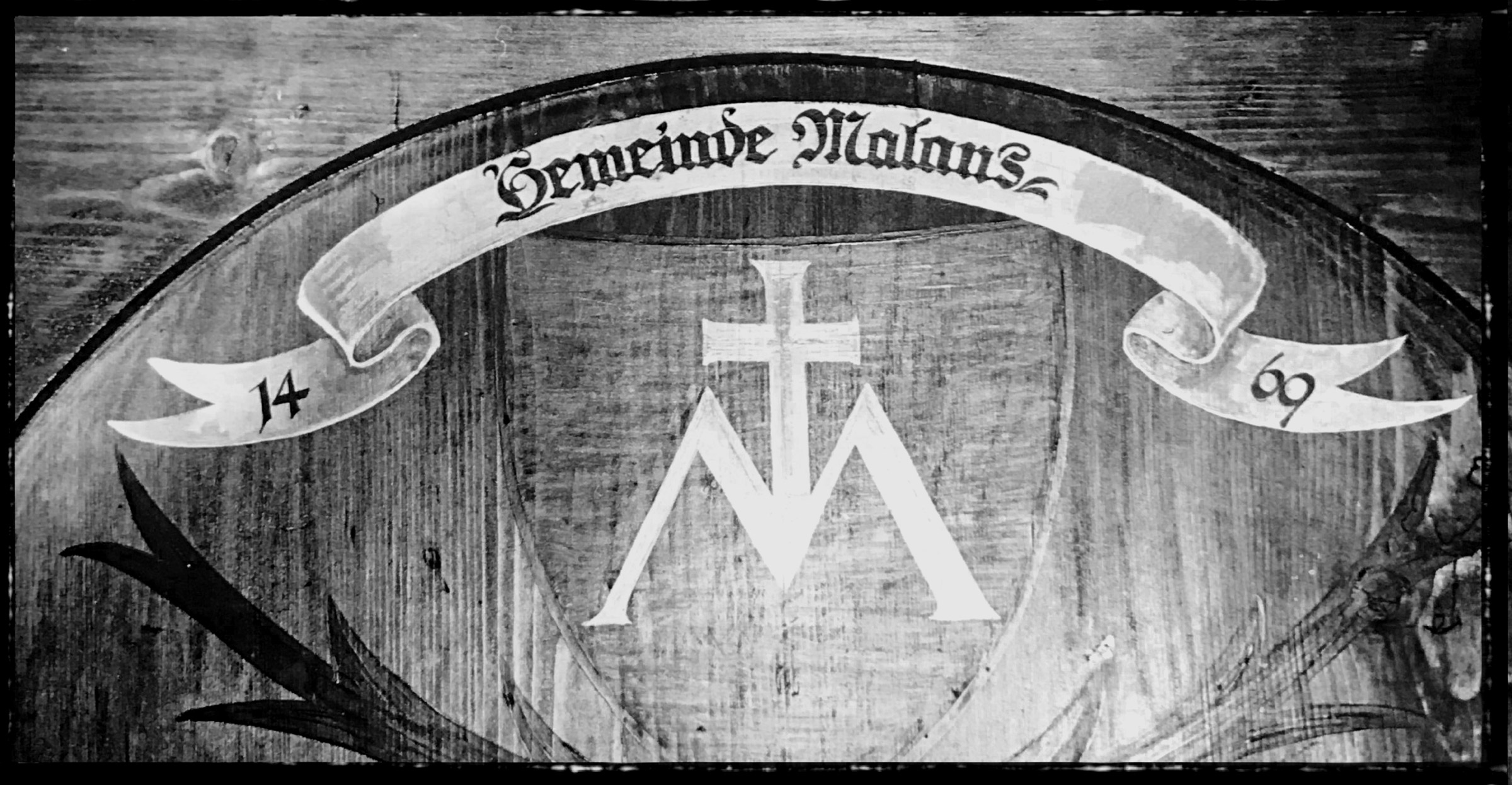
The first wine
Bartholome Fromm produces the first wine from the Fromm estate. The family is first mentioned in historical records in Malans in 1628.
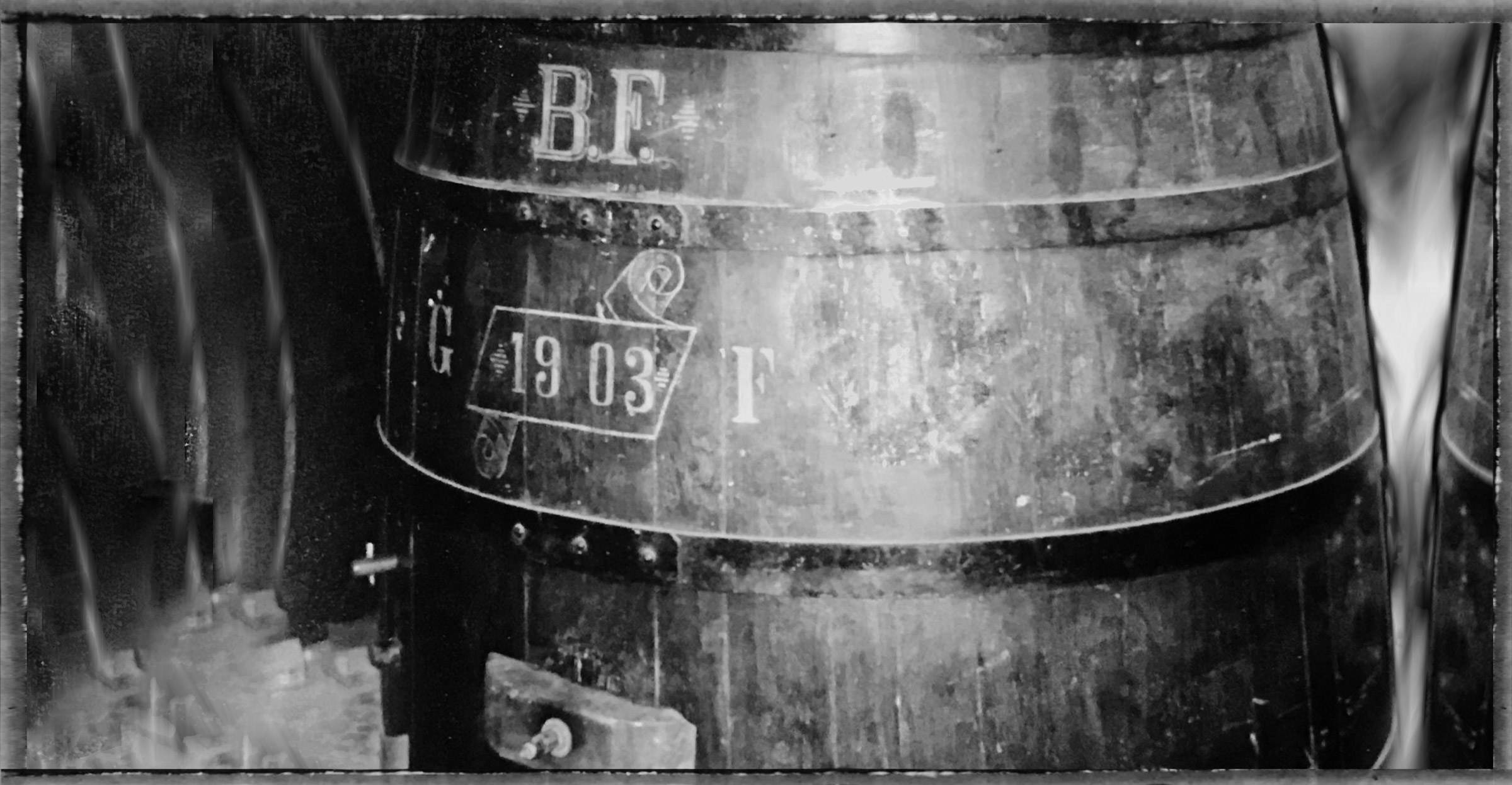
The 2nd generation
The family business is passed on from Bartholome to his son, Johann Georg Fromm. The initials on the wine barrels are expanded.

The Fromm family
Johann Georg Fromm with his wife, Anna, and their five children. Their son Walter Martin is in the middle.
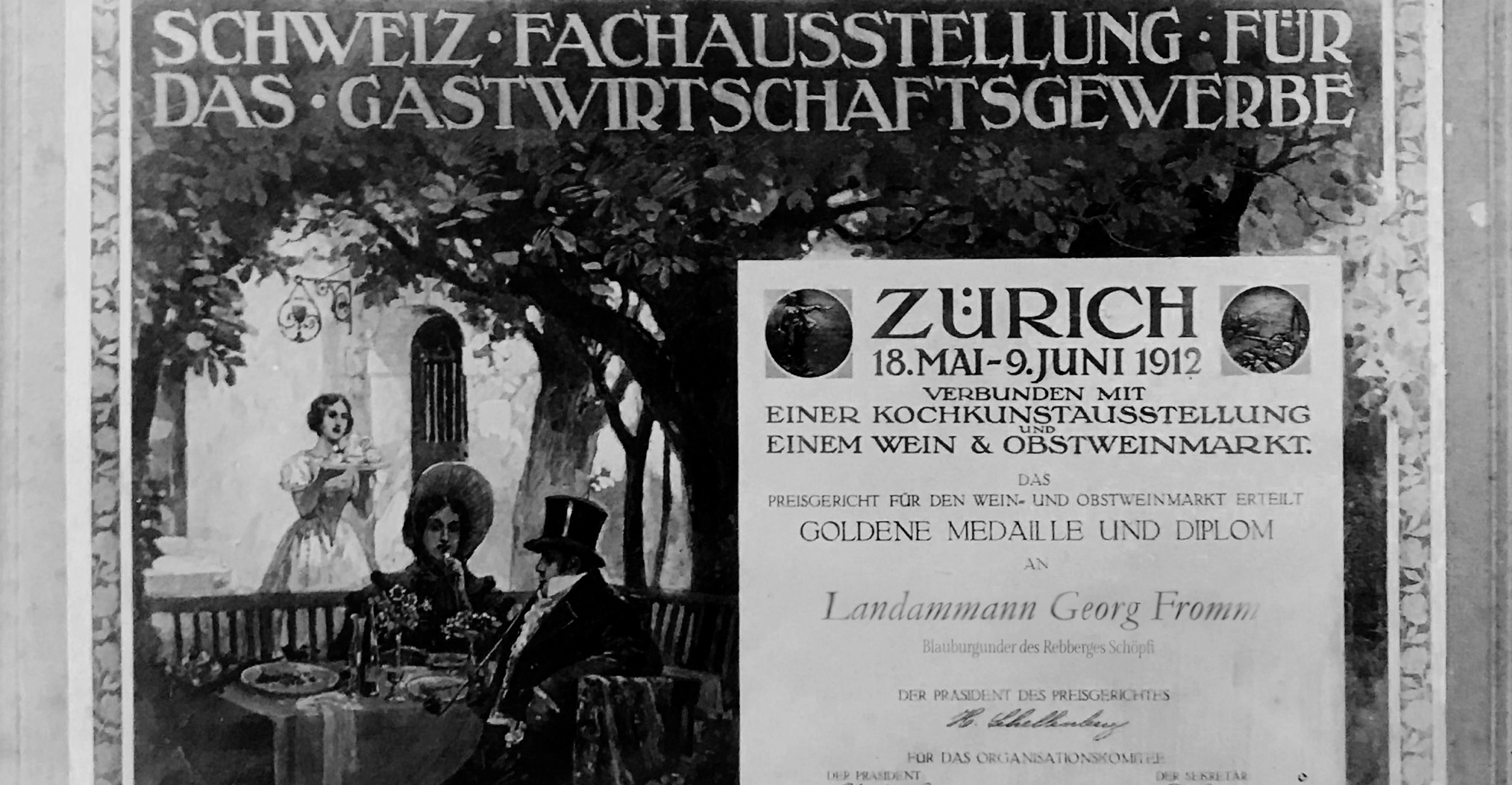
The golden Schöpfi
Johann Georg Fromm is awarded a gold medal for his Pinot Noir from the Schöpfi vineyard at the Swiss hospitality industry trade exhibition.

The 3rd generation
At the age of 32, Walter Martin Fromm takes over the family estate on Oberdorfgasse in its third generation. Here he is pictured with his wife, Rosa, and their children. Their son Georg is in the middle.

First vintage Georg Fromm
Georg Fromm completed his winemaking apprenticeship with Hans Ueli Kesselring in Weinfelden. He pressed his first vintage here in Malans in the 1970s, at the age of 17.
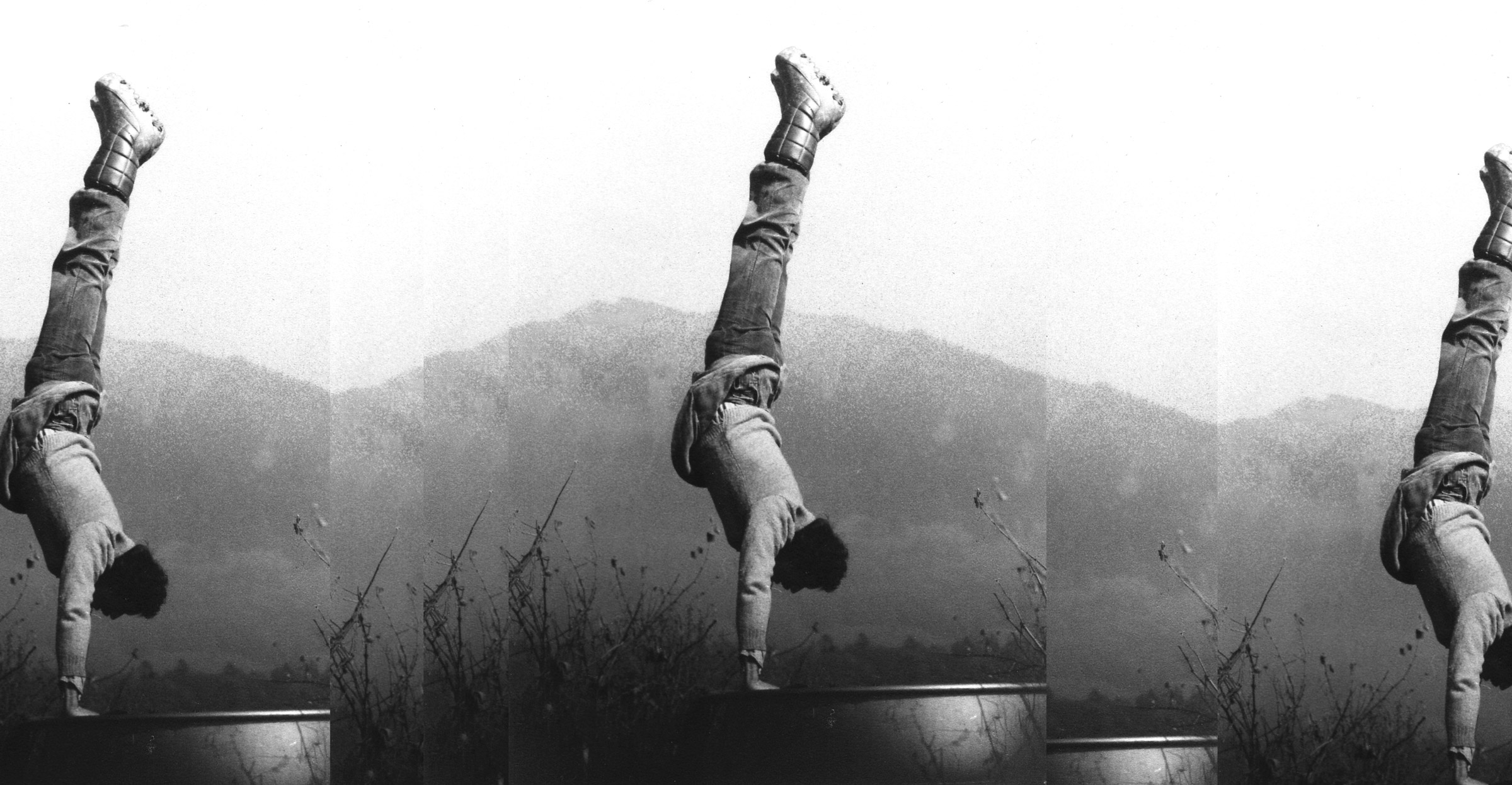
The iconic barrel handstand
Passionate gymnast Georg Fromm concludes the 1980 harvest in legendary style with a handstand on the harvest stand.

The Fromm Winery
Georg and Ruth Fromm pack up their belongings, including their children, and emigrate to Blenheim in New Zealand, where they establish the Fromm Winery.

Working at the Winery
Marco Fromm gains his first experience of wine pressing at the age of nine, at his family's winery in New Zealand.

A family in two worlds of wine
Georg and Ruth (pictured here with their children Livio, Piera Maria and Marco) are relocating their base back to Malans. From now on, they will be commuting between the two wine worlds.
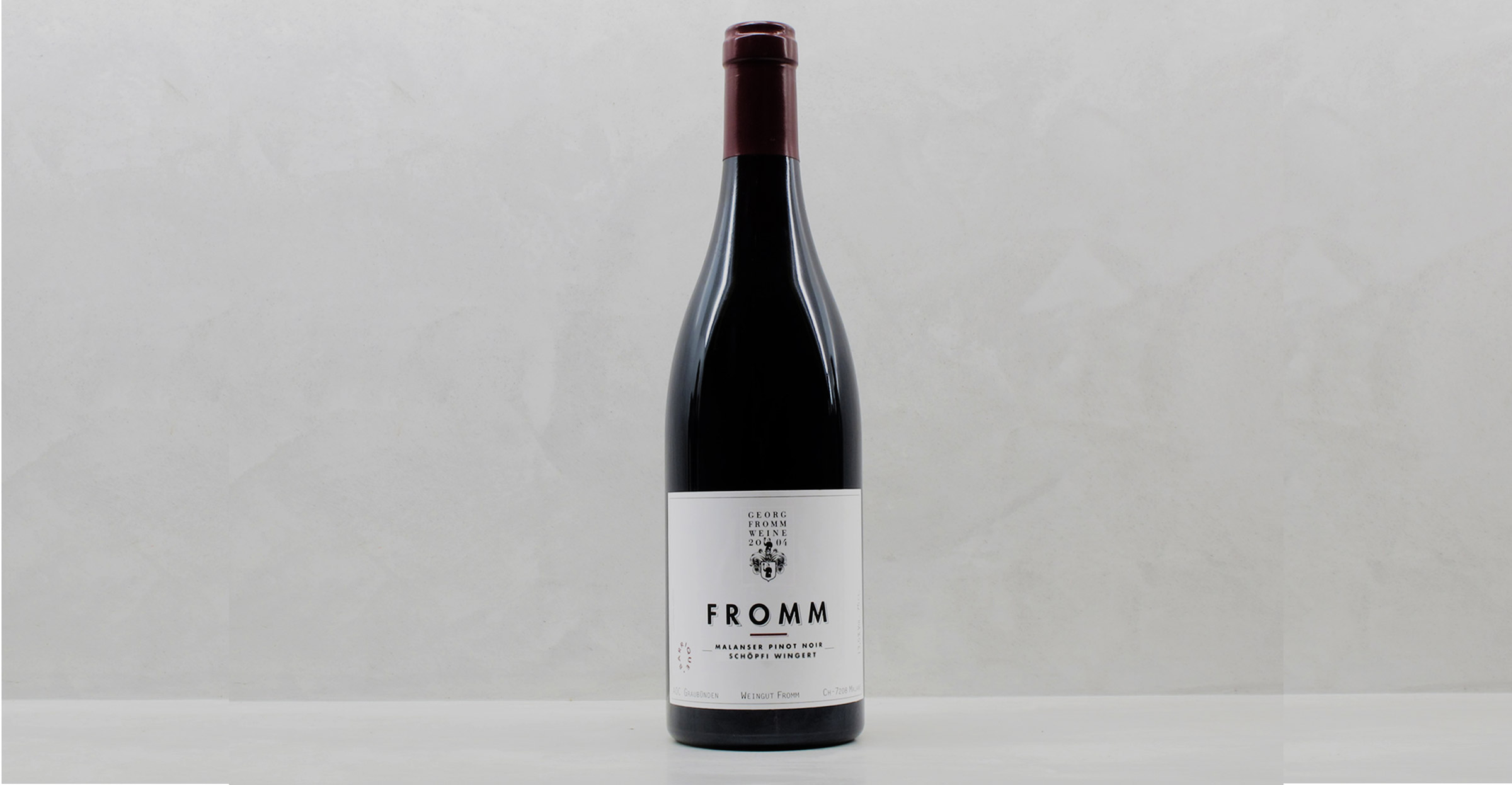
The first Schöpfi vintage
Almost a century after Johann Georg Fromm was awarded a gold medal at a Swiss trade fair, Georg Fromm presses the grapes from the Schöpfi vineyard again for the first time in 2004, producing a single-vineyard Pinot Noir.

The 5th generation
Marco Fromm returns to Malans with his cousin Walter and joins the family business.

New construction and takeover
Marco Fromm officially takes over the winery and opens the new, modern building on Baguggiweg. Surrounded by nature, the Mühlbach stream and the top vineyards of Schöpfi, Fidler and Spielmann, it is the perfect location.
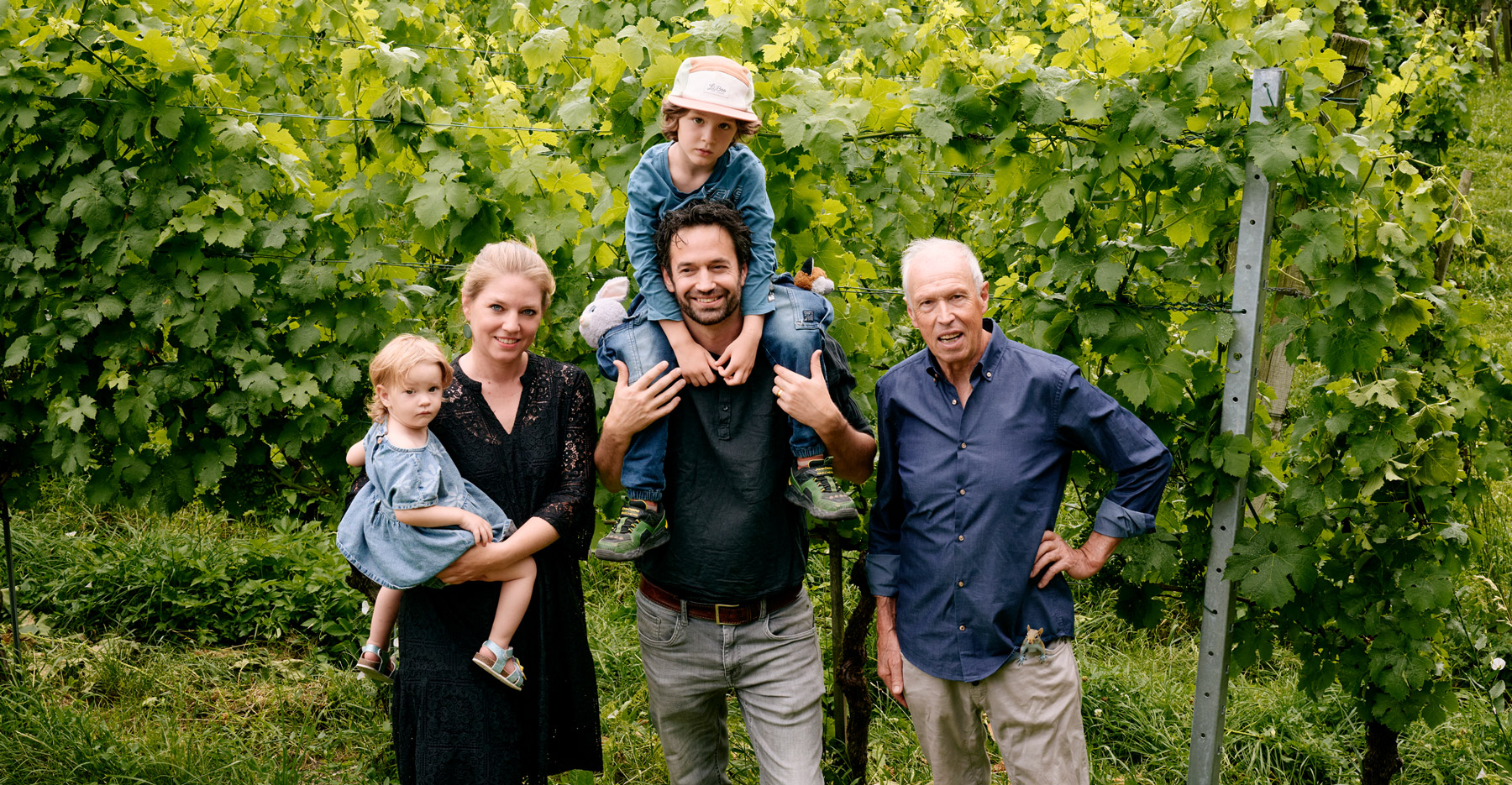
The Fromm family
Marco Fromm runs the Fromm Winery in its fifth generation, together with his wife, Jasmin. Here they are with their children, Neo Gaetano and Soraya.
Our Philosophy
We cultivate our vines in harmony with nature, adhering to the principles of regenerative agriculture and, of course, maintaining our organic certification. Above all, producing single vineyard wines involves seeking to understand the unique characteristics of each vine. This requires a very gentle vinification process involving minimal intervention. The origin and primary aromas of the different grapes and clones must not be obscured by impure fermentation, excessive battonage or excessive oak ageing.



